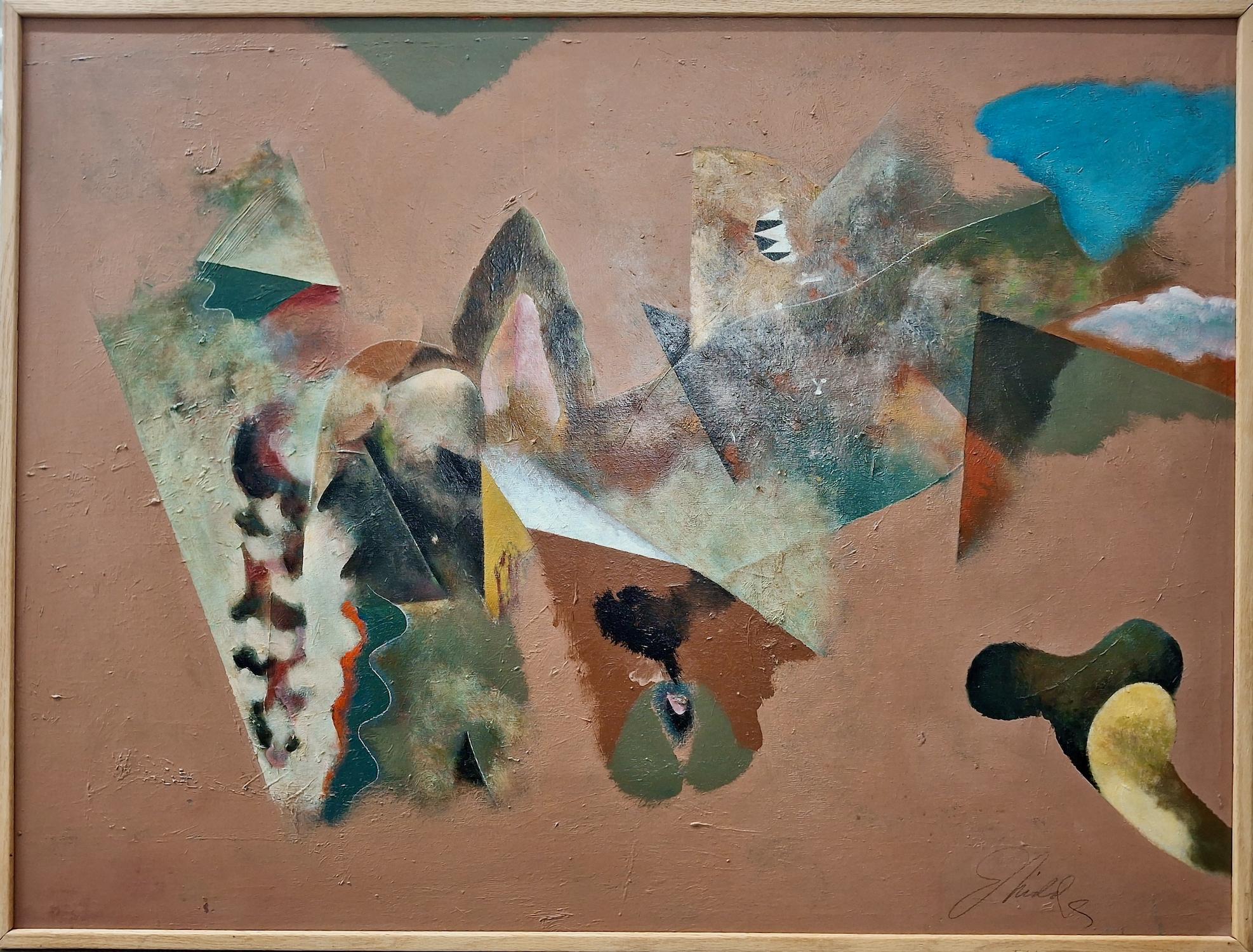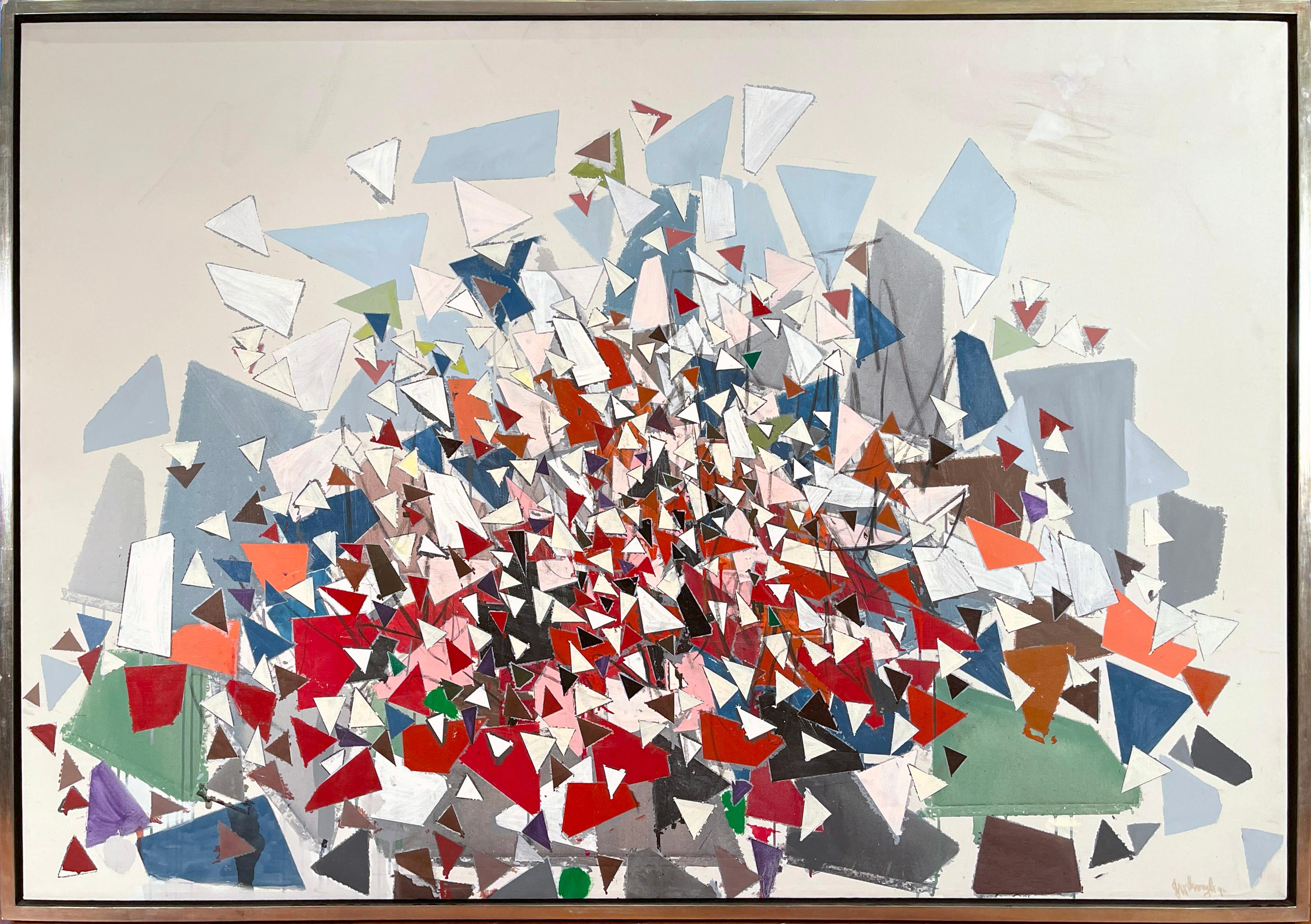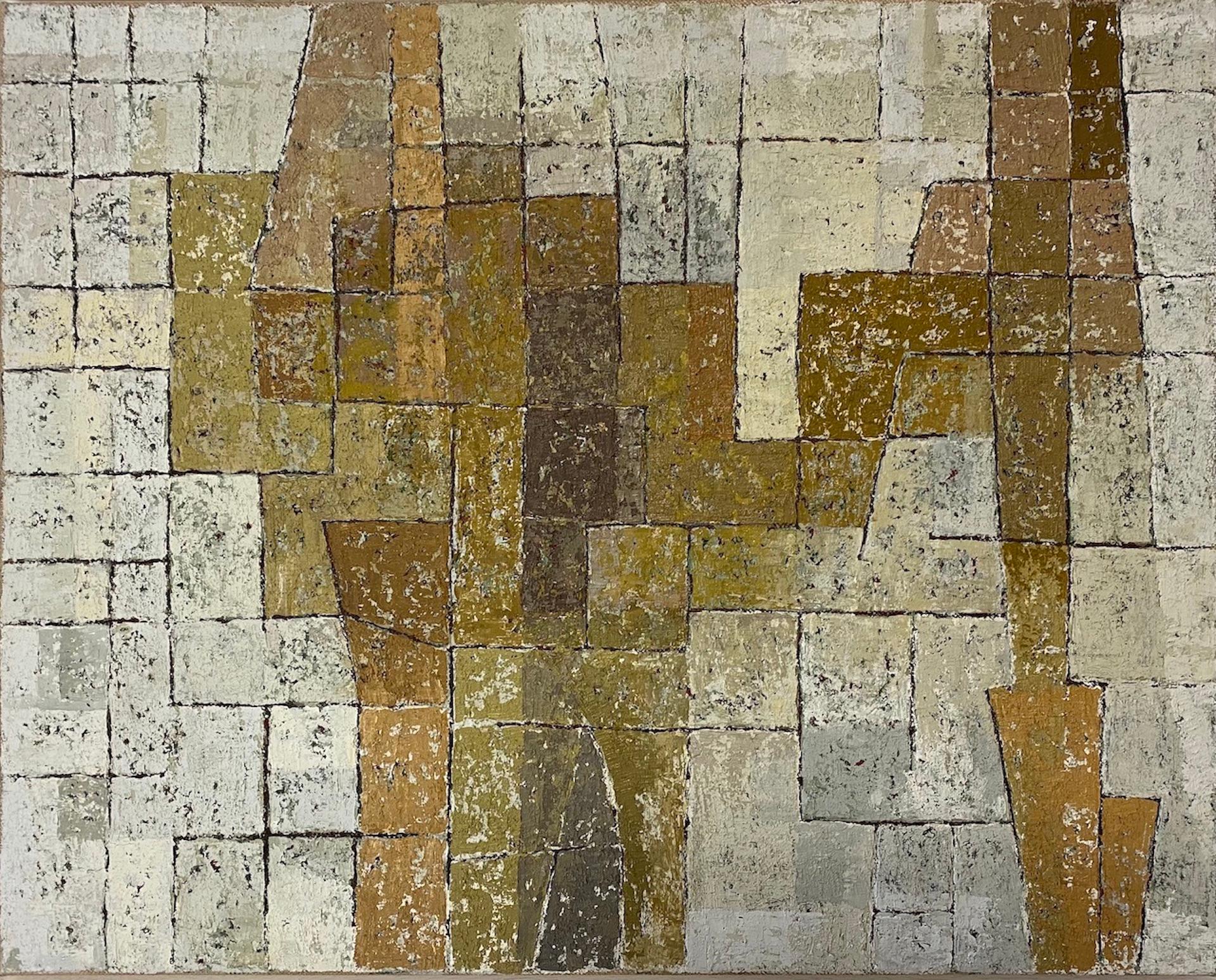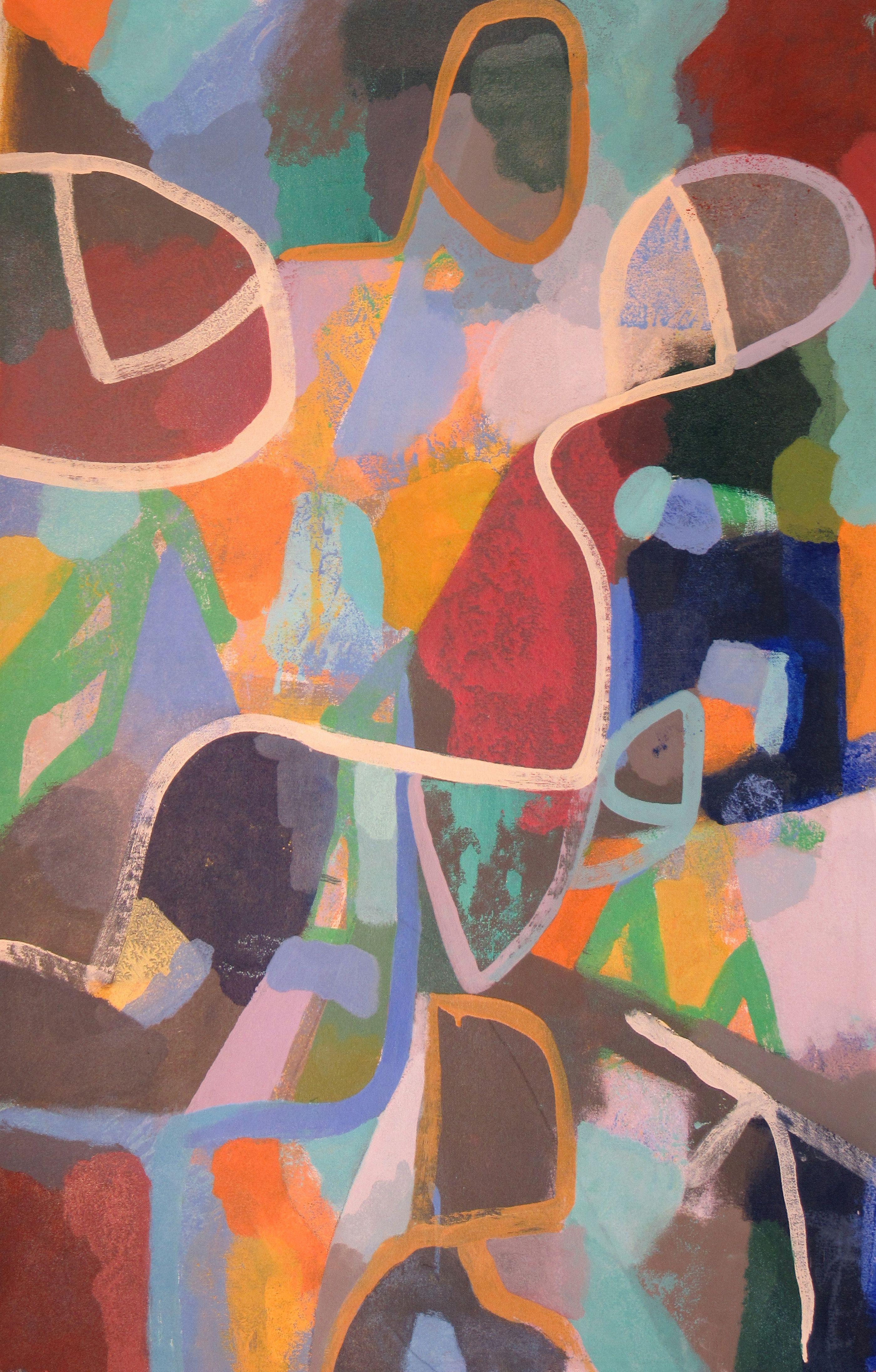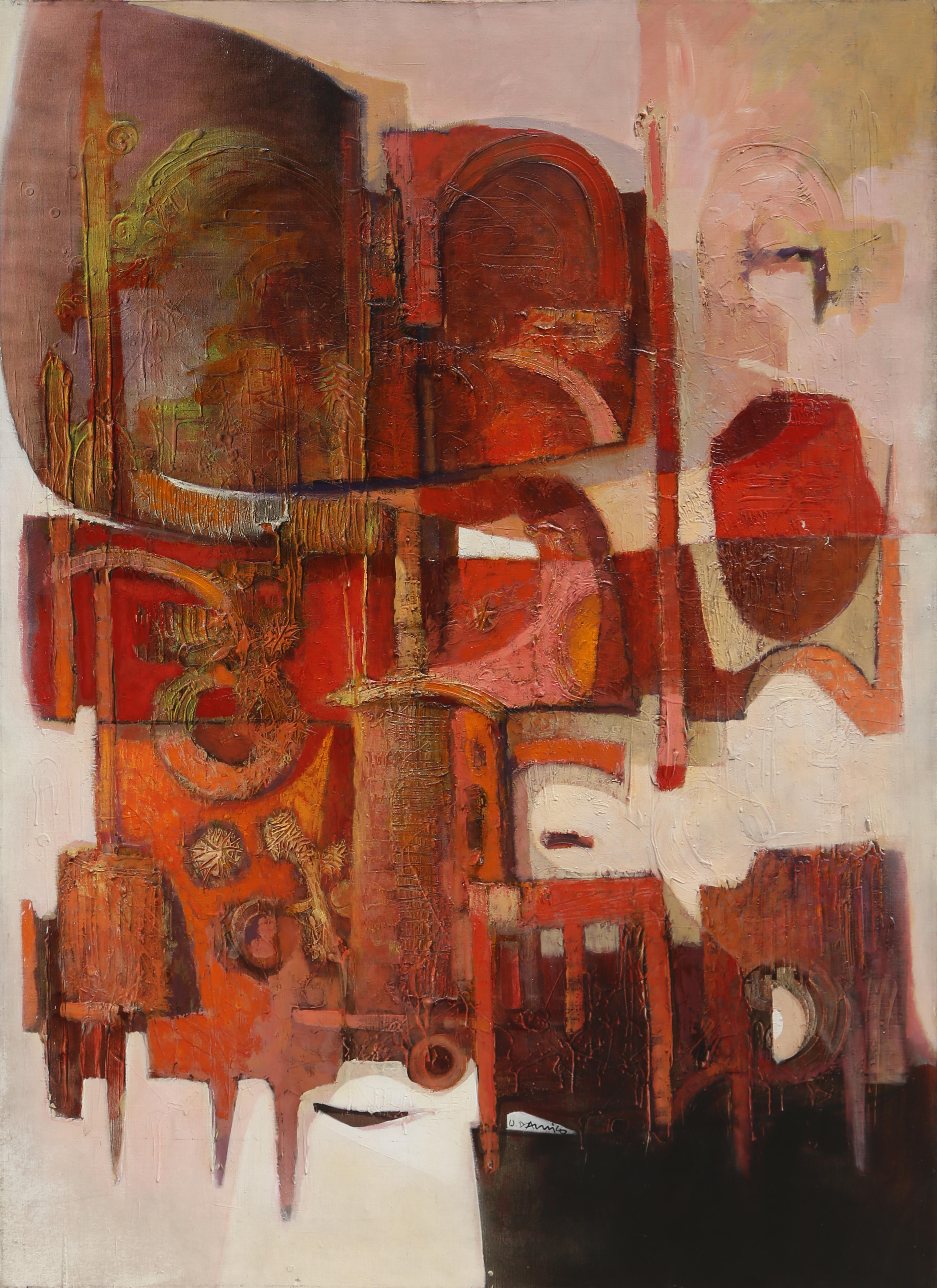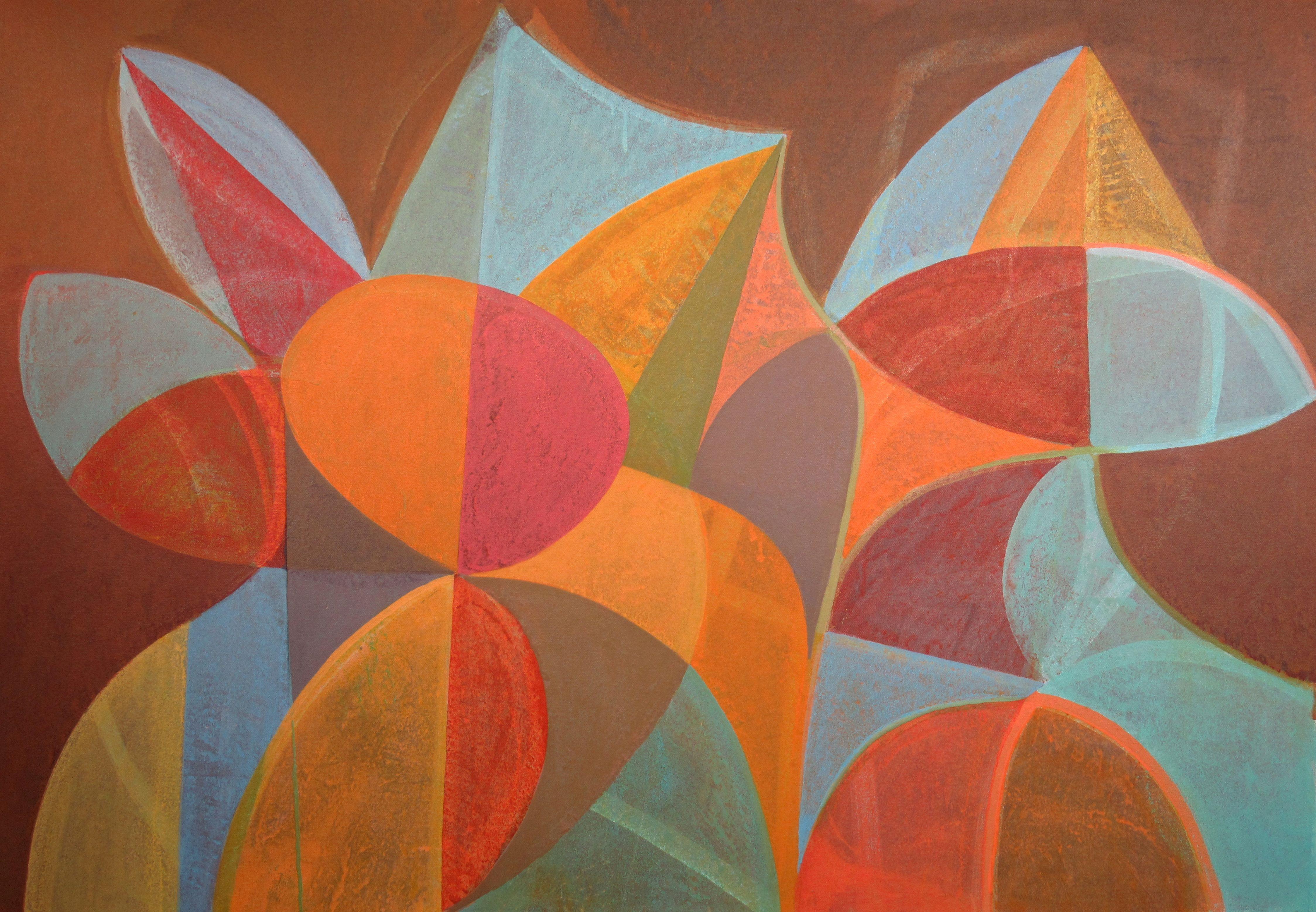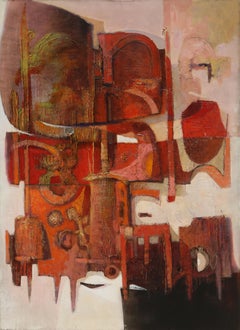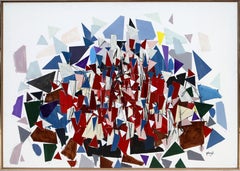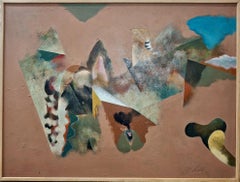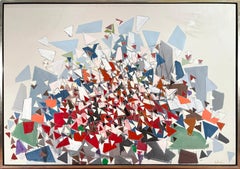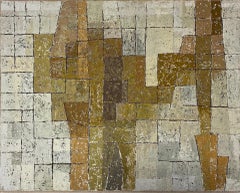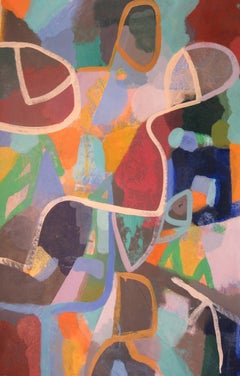Items Similar to Modern Abstract Painting by Ted Gilien
Want more images or videos?
Request additional images or videos from the seller
1 of 7
Ted GilienModern Abstract Painting by Ted Giliencirca 1960
circa 1960
$6,850
£5,201.72
€5,958.64
CA$9,727.22
A$10,640.11
CHF 5,562.92
MX$128,163.13
NOK 69,528.74
SEK 65,590.60
DKK 44,480.58
About the Item
Artist: Ted Gilien, American (1914 - 1967)
Title: Untitled
Year: circa 1960
Medium: Oil on Masonite, signed l.l.
Size: 24 x 32 inches [60.96 x 81.28 cm]
- Creator:
- Creation Year:circa 1960
- Dimensions:Height: 24 in (60.96 cm)Width: 32 in (81.28 cm)Depth: 2 in (5.08 cm)
- Medium:
- Movement & Style:
- Period:
- Condition:
- Gallery Location:Long Island City, NY
- Reference Number:1stDibs: LU4664414221
About the Seller
4.9
Platinum Seller
Premium sellers with a 4.7+ rating and 24-hour response times
Established in 1979
1stDibs seller since 2014
3,117 sales on 1stDibs
Typical response time: 1 hour
- ShippingRetrieving quote...Shipping from: Long Island City, NY
- Return Policy
Authenticity Guarantee
In the unlikely event there’s an issue with an item’s authenticity, contact us within 1 year for a full refund. DetailsMoney-Back Guarantee
If your item is not as described, is damaged in transit, or does not arrive, contact us within 7 days for a full refund. Details24-Hour Cancellation
You have a 24-hour grace period in which to reconsider your purchase, with no questions asked.Vetted Professional Sellers
Our world-class sellers must adhere to strict standards for service and quality, maintaining the integrity of our listings.Price-Match Guarantee
If you find that a seller listed the same item for a lower price elsewhere, we’ll match it.Trusted Global Delivery
Our best-in-class carrier network provides specialized shipping options worldwide, including custom delivery.More From This Seller
View AllLarge Abstract Expressionist painting by Oskar D'Amico
By Oskar D'Amico
Located in Long Island City, NY
Artist: Oskar Maria D'Amico, Italian (1923 - 2003)
Title: Untitled
Year: 1967
Medium: Oil on Canvas, signed
Size: 66 x 48 in. (167.64 x 121.92 cm)
Category
1960s Abstract Expressionist Abstract Paintings
Materials
Oil
Abstract, Signed Oil on Board Painting by John F. Leonard
Located in Long Island City, NY
Abstract (57)
John F. Leonard
American (1921–1987)
Date: 1977
Oil on Board, signed l.r.
Size: 16 in. x 20 in. (40.64 cm x 50.8 cm)
Frame Size: 18.5 x 22.5 inches
Category
1970s Abstract Abstract Paintings
Materials
Oil, Board
Large Abstract Painting by Philip Standish Read
By Philip Standish Read
Located in Long Island City, NY
Artist: Philip Standish Read, American (1927 - 2000)
Title: Untitled
Year: circa 1975
Medium: Oil on Canvas, signed l.r
Size: 60 x 72 in. (152.4 x 182.88 cm)
Category
1970s Abstract Abstract Paintings
Materials
Oil
N-4, Large Abstract Expressionist painting by Robert Goodnough
By Robert Arthur Goodnough
Located in Long Island City, NY
At once an Abstract Expressionist and Color Field painting, this large colorful work by Robert Goodnough bursts with the energy of confetti. This acrylic and oil on canvas painting i...
Category
1990s Abstract Expressionist Abstract Paintings
Materials
Canvas, Oil, Acrylic
Large Abstract and Collage Painting on Canvas by Dan Teis
By Dan Teis
Located in Long Island City, NY
Artist: Dan Teis, American (1925 - 2002)
Title: Abstract in Pastels
Year: 1979
Medium: Acrylic on Canvas, signed l.r.
Size: 54 x 60 in. (137.16 x 152.4 cm)
Frame Size: 55 x 61.5 inches
Category
1970s Abstract Abstract Paintings
Materials
Canvas, Acrylic
Abstract Composition, Abstract Expressionist Oil Painting by Lance Balderson
By Lance Balderson
Located in Long Island City, NY
Artist: Lance Balderson, American
Title: Abstract Composition
Year: circa 1980
Medium: Oil on Canvas, signed l.r.
Size: 40.5 x 56 in. (102.87 x 142.24 cm)
Frame Size: 41 x 57 inches
Category
1980s Abstract Expressionist Abstract Paintings
Materials
Oil
You May Also Like
An Abstract of "Forces"
Located in San Francisco, CA
The artist of this piece, William "Bill" Stephens Shields Jr. (1925-2010), was born in San Francisco and following the death of his father in 1931, the then-4 year-old grew up in Tex...
Category
Late 20th Century Abstract Abstract Paintings
Materials
Canvas, Oil
L - 7
By Robert Goodnough, 1917-2010
Located in New York, NY
Robert Goodnough
(American, October 23, 1917 – October 2, 2010)
Title: "L-7"
Acrylic and Oil on canvas
46 x 68 inches
Signed lower Right
Signed and dated 1990 on reverse
Category
Late 20th Century Abstract Expressionist Abstract Paintings
Materials
Canvas, Acrylic, Oil
Miles Cole, Solea, Abstract Art, Original Painting, Contemporary Art
By Miles Cole
Located in Deddington, GB
Solea [2016]
Original
Abstract
Oil Paint on Canvas
Image Size: H:61 cm x W:76 cm
Framed Size: H:65 cm x W:81 cm x D:4cm
Sold Framed
Please note that insitu images are purely an indic...
Category
21st Century and Contemporary Abstract Abstract Paintings
Materials
Canvas, Oil
Once Too Often, Painting, Acrylic on Canvas
By Hal Mayforth
Located in Yardley, PA
A colorful vertically formatted painting the many interesting textures. Areas of dark blues, reds and grays are transcribed by off white abstract brushstrokes. :: Painting :: Abstrac...
Category
2010s Abstract Abstract Paintings
Materials
Acrylic
Here's What You Need to Know, Painting, Acrylic on Canvas
By Hal Mayforth
Located in Yardley, PA
A colorful hard edged arrangement of shapes in reds, blues, teals and oranges. Many interesting textures here. The final composition was arrived upon adding and subtracting prelimina...
Category
2010s Abstract Expressionist Abstract Paintings
Materials
Acrylic
Photography oil painting by Robert Freimark
By Robert Freimark
Located in Hudson, NY
Hand-signed and dated "Freimark 1963" lower right.
Signed, titled and dated "Photography / pol. 1963 / Robert Freimark" verso.
Provenance:
-Gift from Robert Freimark to his friend T...
Category
1960s Abstract Abstract Paintings
Materials
Canvas, Oil
